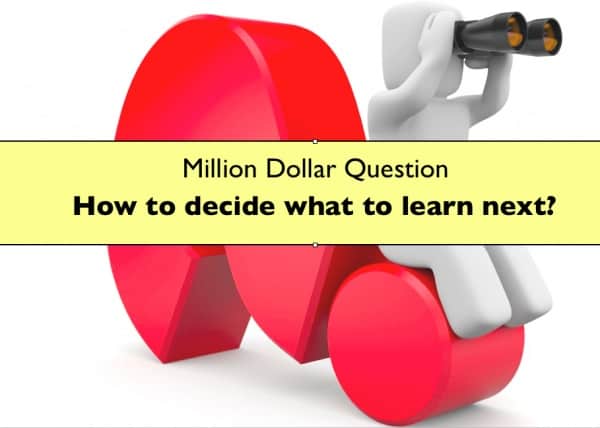How I Learn

For almost 30 years, I read at least a book a week–it was the primary way I learned. Sharing lessons from books was a regular part of my management team meetings. But I’ve only read a handful in the last year—none in print format. I’m reading more than ever, I just doing it online and mostly in short chunks. Below are seven ways I learn and a few tips from others:
1. Scan broadly. Build daily habits of scanning broadly. I use iGoogle (for a few more months) to track a couple dozen education and tech blogs. I get lots of Google Alerts and eblasts. I follow a dozen Twitter hashtags and follow lots of friends on Facebook and Linkedin. I usually listen to an hour of NPR and an hour of CNBC.
2. Build an individual learning plan. Make a list of what you need to know to do your job better, to get/create your next job, and to meet your career objectives.
There are lots of free and inexpensive ways to build job skills. Check out these Getting Started blogs from General Assembly and courses on Udemy (both Learn Capital companies).
3. Make a list of good questions. Every week someone asks me a question I don’t have a good answer for. I make it a blog assignment and open a doc and start taking notes. It helps articulate my thinking, it prompts research, it focuses my learning. Following are four recent examples of work product that started as, “That’s a good question, I’ll write about it next week.”
- A Proposal for Better Growth Measures
- On Being a Real Person: The Missing Core of K-12
- 10 Big Blended Learning Questions
- The High School Challenge: Improvement vs. Innovation
4. Pay attention to serendipity. If you keep your eyes open you’ll evidence of trends. As noted last month, watch for unexpected sources:
- Khan Academy showed us the toolset for competency-based learning;
- Udemy is creating a new vision of lifelong learning relationships;
- P2PU may be creating new market signaling strategies that serve as degree replacements in dynamic job categories;
- Self organizing parent coops around virtual schools could prove to be an interesting source of flex model innovation; and
- DARPA investigations into psychological hardiness may yield new insights for K-12 motivational profiles and early warning systems.
5. Get out more often. Field trips and site visits are life changing. Do your homework, choose wisely, find a way to visit folks doing things differently and better. Here are four recent field trip reports:
- What’s All The Buzz About Detroit?
- Expeditionary Learning Launches Its First NYC Charter
- Summit Denali: Engaging Student-Centered High School Model
- Smart Cities: Viva Las Vegas
6. Make a plan to tackle the big stuff. The eight Digital Learning Now SmartSeries papers were partly a result of my interest in outlining the big questions of our time and working through them with a smart team. Every month we take on a new topic and it results in research, writing, and discussion of the formative issues of our time.
7. Create learning projects. When I land on an important topic of interest, I try to turn it into a learning project. Last year I was interested in how and where innovation happens and how it spreads or why it doesn’t. I decided to try to spend six months writing about a different city every week. The Smart Cities series is beginning to yield some lessons.
Following are a couple lessons from four thoughtful sources on how to learn.
Lisa Lewin: I routinely use visual maps to break up new information into easily understood patterns, or to visually line up new data with what I already know. If I can visualize knowledge, I can absorb it.
Brenden Murphy made a cool video about how he learns: 1) Reading following the teacher’s lead, 2) Doing and making things, 3) Reflecting and thinking, 4) Watching and copying what other people do, and 5) Sharing – collaborating.
Rajesh Setty: Learning is not limited to what you do explicitly to become proficient on a certain topic. Every single day you are learning as you work through your projects. So “learning” encompasses both what you do explicitly and what projects you are engaged with. It is always about the balance between increasing current leverage with “relevant” future capacity.
Udemy: The world is changing fast (and the rate of change is increasing). Jobs and skills that barely existed 10 years ago have tons of openings while jobs long thought to be reliable are disappearing. It can be tough to navigate and handle this. Thankfully, as technology changes the world, it also gives us tools and methods to keep up. While it’s never been as important to keep learning new things as it is now, it’s also never been as affordable, accessible, and easy to do so. What do I want to do? What do I need to know? Where can I learn that?
Digital Learning Now! is a Getting Smart Advocacy Partner.







0 Comments
Leave a Comment
Your email address will not be published. All fields are required.